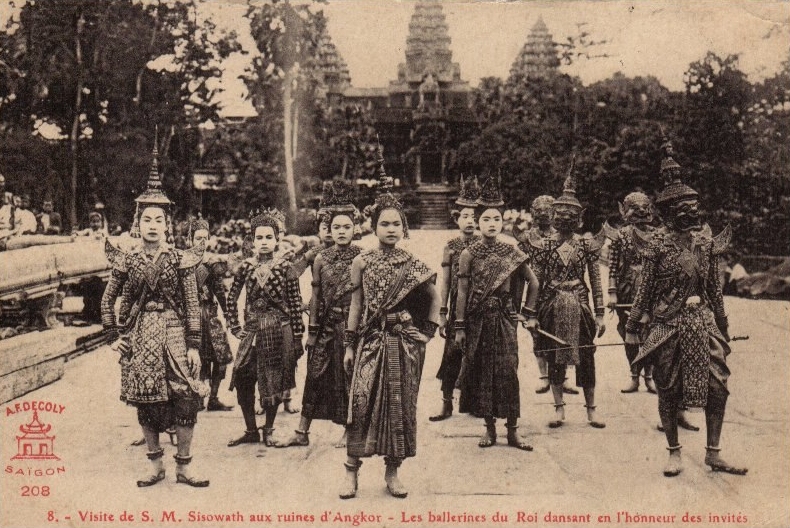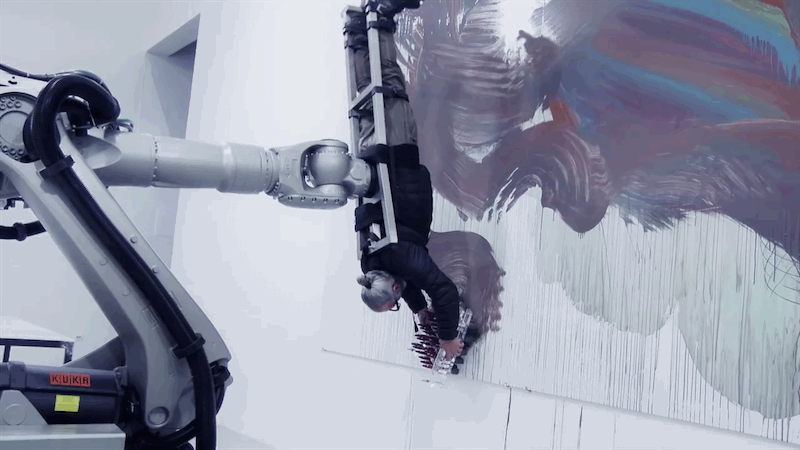Dancer with the Royal Government of Cambodia to be the classic tragedy of the Khmer. Khmer classical dance (ballet) of the Kingdom of Cambodia is famous for its soft gesture fascinating and accessories shining bright lightning. Dancer with the Royal Government of Cambodia is to be the traditional classical tragedy Khmer close as part of their lawful King over a thousand years ago. Dance honor four plays such as: (F) the deputy (male) the Giants (bad) the Monkey (Animal) each character features and colorful, with separate dressing painted powder makeup, face shields and gesture custom. gesture and dance, these neadakar learn active and busy for the past several years remember meaningful emotional fear romantic happy or angry.
Performances take place according to the rhythms of the music shrine by neadakar voice breaking dance interpretation of the story and romance with a small group of women sang. Dancer with the Royal almost disappeared under the Khmer Rouge regime, which was exhumed uprooted almost entirely teachers dramatic, musical and teachers. Since the fall of the Pol Pot regime in 1979. The dancer with the Royal has been training and re-installed Series tragedy. Formal classical dance, which is associated with King and since then has become an item a core for building and build a new Khmer identity. Today, the Royal Ballet has discovered, and its bright rays but there are many obstacles Manufacturers such as lack of budget and performance competition from news media or the risk of popular art in relation to tourism. There are only three teachers tragedy only four people who escape and survival, and knowledge really sure of all the martial arts, dance featuring amenities.
Angkor Night is a cultural activity France Khmer showing scenes Arts Federation is a Western culture and one Oriental culture, which work together to make out was the culmination of a number of works between the Khmer and French artists. Concept (glass between French culture and Khmer culture) is a red fiber cable of the production program. This cultural activity was born in 2000 as a joint initiative between the British, French Ambassador Jean Andrew Bush and stimulating Minister culture and Fine Arts Khmer Samdech Preah Ream Norodom Bopha Devi. since then, the event has become an artistic activity largest and a major cultural change, which was organized and coordinated by the French cultural Center. Since 2003, the public is invited to visit have risen steadily to nearly 4,000 2005. Strong because of success in the past Angkor Night 2008 was also announced that it will be held from 31 January to March 2 February, the resort at Angkor Wat temples. Meanwhile, to make the rich in the production of cultural activities also have a good reputation up every each year. The annual amount of viewers increased to reach nearly 4,000 in 2005 and more than 4,700 in 2006. Cultural activities are many news media reporters and published in 2006 and are the opinion praise.
Royal Ballet Khmer Classical Dance Ballet has 82 dancers and 35:
Dance Dance revival at 54 and lost 28 dance
Dances resurrection story that was 21 missing for 14
Brief History
Votha Samdech Norodom Bopha Devi dance Prays The Royal Ballet as Classical Dance Khmer, which is the art form worship (art gods), an older long ago among art forms sanctuary and an art form that valuable real spiritual and technical levels highest among the form performing arts in the country. Beginning next session alas tragedy to tragedy athletes annual castle has a role for a dance dedicated to priority TEP or dance offered gods monarchy is a sustainable peace on the situation of mankind to heaven Angel and actress peace or a peace terrorist MC emotional hearts, minds who once danced media ethics and virtue to happiness, peace Khmer thousands of years ago. We can try to conclude that the form Classical Khmer Royal Ballet is a dance of women, because the beginning you are playing characters with four: character she (woman) Neay (male) tuoyok and figures monkeys, as well as chassis secondary chassis animals are all women as expressed those of characters except the characters hermit and clown only performed by males.
Later, with the evolution of the art form this character is expressed by men today.

The performance
The Dance of King Sisowath The Royal Ballet of Classical Dance Khmer is a type of dance that neadakar use animated style and romance, today skillful follow the evolution of the story recounted confirmed by the lyrics of the songs they ( h Heang Caribbean Levi ), which serves sang to the dance with the orchestra Pinpet whose role plays to dance, too.
compatible compatible
Ensembles forget Pinpeatya
1. Rneatek
2. Rneatthoung
3. Rneatdek (now rarely seen)
4. Gamelan Thong (less)
5. Major (kongovng)
6. Kongtauch (kongovng)
7. saamphor
8. A pair of drum
9. Javanese drum pair (less)
10. A pair of premium furnace
11. calm
12. graph




 Max (Louis C.K.) is a spoiled terrier who enjoys a comfortable life in a New York building until his owner adopts Duke, a giant and unruly canine. During their walk outside, they encounter a group of ferocious alley cats and wind up in a truck that's bound for the pound. Luckily, a rebellious bunny named Snowball swoops in to save the doggy duo from captivity. In exchange, Snowball demands that Max and Duke join his gang of abandoned pets on a mission against the humans who've done them wrong.
Max (Louis C.K.) is a spoiled terrier who enjoys a comfortable life in a New York building until his owner adopts Duke, a giant and unruly canine. During their walk outside, they encounter a group of ferocious alley cats and wind up in a truck that's bound for the pound. Luckily, a rebellious bunny named Snowball swoops in to save the doggy duo from captivity. In exchange, Snowball demands that Max and Duke join his gang of abandoned pets on a mission against the humans who've done them wrong.
 What is art? According to Plato, art is an imitation of an imitation, a mere illusion twice removed from the reality of the eternal Forms. According to me, art is something I like looking at.
What is art? According to Plato, art is an imitation of an imitation, a mere illusion twice removed from the reality of the eternal Forms. According to me, art is something I like looking at.



